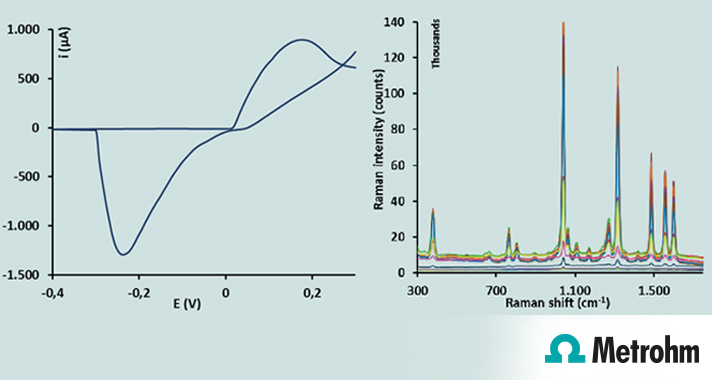Metal screen-printed electrodes are promising, cost-effective SERS substrates.
Metrohm Dropsens Spectroelectrochemistry White Paper:
In this white paper Alejandro Junquera Pérez, Pablo Fanjul Bolado, David Hernàndez Santos demonstrate the time resolved Raman spectroelectrochemistry measurements with screen-printed electrodes.
In this work, time resolved Raman spectroelectrochemistry measurements with screen-printed electrodes are shown. The instrument used combines in a totally integrated box: a 785 nm laser source, a high resolution Raman spectrometer and a bipotentiostat/galvanostat. Experiments are controlled with an excellent spectroelectrochemical software which allows real time data collection and useful data treatment.
SPELEC RAMAN was coupled with a reflection Raman probe and a specific cell for screen-printed electrodes. An in-situ surface-enhanced Raman spectroscopy (SERS) assay was carried out using screen-printed silver electrodes. The Tris(2-2’- bipyrdyl)dichlororuthenium(II) complex shows an intensive SERS effect after activation of the electrode surface by cyclic voltammetry. In situ dynamic SERS effect could be followed in real time by the SPELEC RAMAN instrument obtaining information on the electrode processes leading to high SERS signals. The sensitive detection of the ruthenium complex could be achieved in a simple and precise way using Raman spectroelectrochemistry, SPELEC RAMAN and cost-effective screen-printed silver electrodes
Download our White Paper below to learn more about
- SPELEC Raman experimental setup: Compact Raman Spectroelectrochemistry
- In situ dynamic SERS effect with screen-printed electrodes
- Dynamic SERS effect followed by SPELEC Raman









